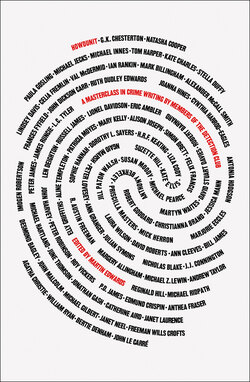Читать книгу Howdunit - Группа авторов - Страница 18
Sources of Inspiration Nicholas Blake
ОглавлениеImagination at full stretch: emotional involvement … During the Thirties, I saw my little son narrowly missed by a road hog. Suppose he had been killed, and the police were unable to trace the hit-and-run driver? Such was the germ of The Beast Must Die. I tried to imagine myself into the mind of a man – a widower whose only child had been killed like this: how would he find the culprit, and how might he set about destroying him? Revenge, incidentally, seems to be the motive in quite a few of my detection novels, though I am not an overly vindictive person. Perhaps, if I had lived in the early seventeenth century, I would have turned out revenge dramas after the Jacobean pattern. But the point is that, if The Beast Must Die has a sharper edge than most of my thrillers, it is because it sprang from that initial involvement of my emotions, and because I was enabled thus to take the hero’s plight at a more serious imaginative level. This book has the one first-rate plot I have ever invented – a plot, by the way, which was no great shakes till, halfway through the book, I suddenly saw how the hero could use his diary.
The plot of A Tangled Web, on the other hand, was given to me gratis – by ‘The Case of the Hooded Man’, as Sir Patrick Hastings called it in his Memoirs, the first case in which that celebrated KC led for the defence. At Eastbourne early this century a policeman was shot by a burglar – a clergyman’s son who bore the most remarkable resemblance, in temperament and actions, to Hornung’s ‘Raffles’. Sir Patrick was chiefly concerned, in his book, with the legal aspects of the case. So I could exercise all my imagination in reconstructing the character of this young burglar, of his beautiful and innocent mistress, and of the ‘friend’ who proved to be their downfall – a man who, even through Sir Patrick’s factual account, shines out luridly as the nearest thing to Iago I have ever heard about in real life. My emotions, even at the distance of 45 years, became thoroughly involved with the burglar’s girl as I interpreted her. After the book was finished, inquiries among retired policemen who had taken part in the case discovered that several things I had imagined about the Iago character, though not mentioned at the trial, were in fact true.
The germ of A Penknife in my Heart was also given me. A friend suggested a story in which two men, previously unknown to each other and both needing to get rid of certain human encumbrances, meet by chance and decide to swap victims. Neither my friend nor I had read Patricia Highsmith’s Strangers on a Train, or seen the film Hitchcock made of it. Later, I found that Miss Highsmith’s treatment was entirely different from mine; but its starting-point was identical – and, horror of horrors, I had given two of my characters the same Christian names as she had used for two of hers. The plot of A Penknife in my Heart is the most ‘fictional’ of the three presented here, and the most diagrammatic. To put flesh on it, I had to work myself into the minds of two very different men – a coarse brute and a weaker, more sensitive character, plunge as deep as I could into their weird relationship, and be each of them as he made his murder-attempt (upon a complete stranger), and live with them through the aftermath. It needed a pretty strenuous stretching of the invention.
Even before the plot is constructed in detail (or not constructed, in the case of authors like Eric Ambler, who regard writing a crime story as a voyage of discovery) there comes another question. Which type of crime fiction to choose? How to put it all together? Anthea Fraser and Ann Granger, two highly experienced novelists who both worked in other genres before specializing in crime fiction, describe their personal approaches.
